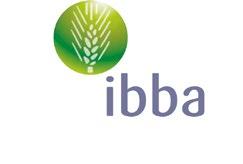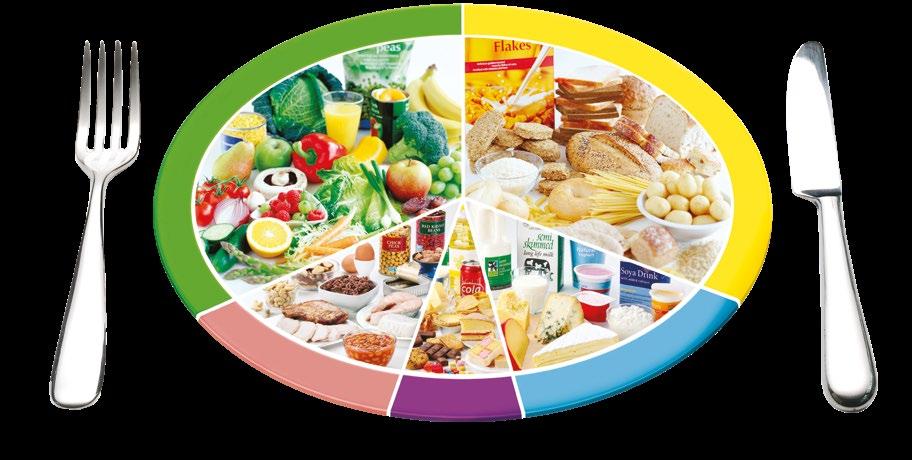





Welcome! We are delighted that you are facilitating your pupils to take over and take part in the Healthy Heroes Lunch Club 2022/2023!
This programme is all about flipping the classroom and letting the children show us how to be healthy – their way! The ‘club’ part of the programme will help to foster a sense of leadership, teamwork and communication skills in your pupils, and the ‘health’ part should encourage children to choose healthy lunch options, learn more about nutrition and boost their activity levels during the school day.
Through their involvement in the Healthy Heroes Lunch Club, children will have the opportunity to be role models and mentor their younger peers on nutrition and the importance of being active in order to stay healthy. Along the way, we hope the children will learn that bread is good for them and contributes to a balanced diet. We also hope that they share their excitement and vital nutritional messages with their families and friends.
Since the programme began in 2014, over 80% of schools nationwide have taken part in the Healthy Heroes Lunch Club. Feedback from teachers informed us that pupils did not just benefit by learning about nutrition and being more active during lunchtime, but they also learned to work in a team, grew in confidence, and developed leadership and communication skills (and they had fun doing all of that too!)
Teacher feedback is important to us, so please share your learnings and how your school engages with the programme.
We hope you and your pupils enjoy it & thanks for taking part, The Irish Bread Bakers Association
The Pupils' Club Pack is available online this year, rather than in print. You can find the link in your welcome email, or you can visit the Healthy Heroes Lunch Club website here: www.healthyheroes.ie
MissionJoinOurtobe Healthy&Stay Active!
Pupils’ Club Pack2022/2023
The aim of the Healthy Heroes Lunch Club is to empower children to learn about healthy, balanced diets and to educate their younger classmates. In particular, one of the aims is to focus on a nutritionally balanced lunch box. The school lunch box should provide about 25%-30% of a child’s energy and nutrient needs. Studies have shown that packed lunches are deficient in ‘healthy’ foods and tend to be high in sugar, saturated fat and salt while low in starchy foods and fibre. Many parents support the ’healthy lunch’ campaign but feel at a loss when trying to put it into practice.
By educating children about nutrition, it is hoped that the message will be brought home and the whole family will benefit.
Ph.D. Dip Nutri & Diet; Dip Counselling; R.D; MINDI.
Dr Mary McCreery is a Registered Consultant Clinical Nutritionist and Dietitian at The Blackrock Clinic, Dublin, with extensive experience in Dietetics and Nutrition in both adults and adolescents. She is Ireland’s leading Dietetic Specialist in Eating Disorders. She has a number of published papers and is a leading authority on Nutrition in the media. She is a member of the Irish Nutrition and Dietetic Institute and is a qualified Counsellor. She completed her PhD in Trinity College Dublin in 1993 and then returned to Trinity in 2005 to achieve a First Class Honours in her training in Counselling and Psychotherapy.

nutritional information
the
Heroes Lunch
has been provided by Dr Mary McCreery,
First, explain the aim of the programme – namely that your school is empowering the older pupils to become role models to the younger students and set an example for good lunchtime nutrition and activity.
Help them establish a Lunch Club committee rotation and a club manifesto. Over the year encourage each new committee to be responsible for setting up games and challenges for the rest of the pupil cohort.
We have some great examples of activities in the Pupil's Club Pack, but we encourage them to make up their own – after all, it is their club!
We have supplied committee members’ badges /stickers, but perhaps the team would like to make their own? In any case, we have more so let us know if you need any further badges or stickers over the course of the year.
Then encourage the children to consider when and where your Healthy Heroes Lunch Club will meet, how often and what they should do.
At these meetings, the children should think about how they could best promote a healthy lifestyle for their younger peers, what a healthy balanced diet looks like and how to make physical activity fun.
We have given suggestions to get them started in their Pupil's Club Packs – but really, it is over to them. We want them to take initiative and go for it!
Finally, the banner provided in your pack is for your committee to take visible ownership of their rolemodel status by creating a Healthy Heroes Lunch Club Noticeboard where the younger pupils can see it.
On it, the children can promote anything that fits their healthy lunchtime manifesto; sandwich recipes, examples of healthy food, food facts, pupils’ work, posters, messages from the Healthy Heroes Lunch Club committee, reminders about hand washing or anything else they feel will inspire pupils.
A healthy lunch box should provide energy to meet a child’s needs during the school day. It should be rich in protein, and high in starch and fibre. A healthy lunch is divided into four main groups:
1. A protein rich sandwich
2. A portion of fresh fruit
3. A portion of fresh vegetables
A source of dairy food to provide calcium and protein
Every single cell in the human body is partly made up of protein; you need protein in your diet to make new cells and repair old ones – they are essentially the building blocks of life. It’s also hugely important for growth and development.
A well-balanced diet should provide enough protein so you shouldn’t need any protein supplements. During digestion, protein-rich foods are broken down into parts called amino acids. These are found in animal sources like meats, milk, cheese, fish and eggs, and plant sources like soya, beans, nut butters, and some grains like quinoa.
Bread is also a source of protein (there is more information on bread on pages 8 & 9). Iron-rich proteins like red meat and egg yolks are important for children. You need to include at least one protein source in your lunch box. What might you include?
Fruit provides fibre and antioxidants (helping to keep cells strong), and may help reduce the risk of cancer and heart disease. It also provides some vitamins and minerals especially vitamin C (found in oranges, kiwis and pineapples) and potassium (found in bananas, apricots and prunes). Irish strawberries are in season from May to November and are rich in antioxidants. It’s important to eat lots of different coloured fruits and eat locally and seasonally, as much as possible. You should include at least one fruit in your lunchbox. Can you name some fruits? Which one is your favourite?
Vegetables can provide a range of vitamins and minerals, as well as fibre and important nutrients for healthy hair and skin. They also contain phytochemicals (chemical compounds that occur in plants, giving plants their colour and taste), some of which have been claimed to have antioxidant, antibacterial, antifungal, and antiviral benefits. Include a variety of different coloured vegetables as part of a meal or as a snack every day, where possible eat seasonally and locally.
Milk and foods made from milk are called dairy foods. They are healthy sources of calcium, iodine, vitamin B2, vitamin B12 and vitamin D, which are needed for healthy bones and teeth. Dairy foods also provide a range of other vitamins and minerals as well as being a great source of protein.
Children aged 3 - 8 need at least three portions of dairy each day, while older children aged 9 - 18 need five portions each day. Try to include one low fat dairy food in your lunch box every day. What dairy foods can you think of? Is your school registered for the School Milk Scheme?
If possible, ask pupils to show examples from their own lunch boxes or show photos to the class to help illustrate these points.
It’s important to get your 5-7 servings of fruit and vegetables every day. Make this fun by picking a different colour fruit or vegetable every day to try. For even more of a challenge, try eating fruits or vegetables you haven’t tasted before.
Try and eat seasonally where possible. For example, carrots are in season in Ireland in March and strawberries are in season in Ireland in May.
If you can, try eating fruits and vegetables that are grown in Ireland or even more locally – check your local fruit & veg shop, food market or give growing a go yourself!
Keep a fruit and vegetable diary for a month. Write down all the fresh fruit and vegetables you eat every day – remember you should be aiming to eat at least 5-7 servings a day! Try as many different colour fruits and vegetables as you can. How did you do after a month?
Try bringing some raw fruit and vegetables with hummus with you to school if you find yourself looking for sweet snacks at lunchtime!
Try adding fruit and vegetables to your sandwiches. Try apple, banana, sweetcorn, beetroot, tomato or cucumber.
Design your own smoothie recipe. What are your favourite fruits and vegetables? Ask an adult to help you make your smoothie recipe. You can have fun by helping to wash, peel, tear leaves and stir.
Ask an adult to help you make a fruit or vegetable kebab at home. You can have fun making patterns with yummy fruit and vegetables you want to include. For example, you could try grape, strawberry and apple.
Make a fruit pizza roll! (4 portions)
Lay out a whole wheat tortilla wrap. Spread some low-fat yogurt on top. Add sliced up pieces of fruit e.g. banana, strawberry, kiwi. Roll up the pizza and cut it into small rolls.
Pop a roll into your lunchbox!
For more information on seasonal fruits and vegetables, or for delicious recipe ideas, visit www.bordbia.ie.
1. The farmer grows the wheat.
2. When it is ready, the wheat is harvested and sent to the miller.
1. The miller tests the wheat and cleans it to get rid of anything that shouldn’t be there, like stones, wood and other grains.
2. Water is added to the wheat to make it softer, and then it is broken down with big rollers. It is sieved to get rid of the ‘bran’ and ‘germ’, leaving behind only the ‘stock’ – the white part of the grain.
3. The stock is put through the rollers again, which breaks it down into a white powder. It is then sieved again to make flour, and sent to the baker.
1. A baker mixes together flour, salt, water, yeast and ‘improver’ (an ingredient which makes the dough stronger and helps it rise faster).
2. The baker cuts the dough up into loaves and puts each loaf into a tin. The loaves are set aside to ‘prove’, which is when the yeast in the dough makes it rise before it is baked. The dough can double in size once it is proved!
3. The dough is put in a really hot oven which bakes it quickly. Once it’s baked, the baker tests the bread’s height and temperature and sets it aside to cool.
White flour usingisonlymade thestock,but wholemeal flourcontains the bran andgermaswell,whichis whyit’sdarkerin colour.
4. After about 2 hours, the bread is ready to be sliced, wrapped and delivered to your local shop! Farmers, millers and bakers work every day to make sure there’s fresh bread in the shops each morning, ready for you to eat.
Years ago,bakers used to make all their bread by hand, but nowadays we use machines to help us make bread.
Bread has been a key part of our diet for thousands of years, and it’s one of the major providers of nutrients in our diets. It’s delicious and so convenient too. Bread is a carbohydrate and provides energy to the body. It also contains protein, and a whole host of vitamins and minerals like iron, calcium, vitamins B1 (thiamine), B2 and B3 as well as folic acid and fibre.






The Food Safety Authority of Ireland recommends eating nutritious foods in the right quantity for disease and obesity prevention. They also provide the calories (energy) needed for active living.

Bread (brown and white varieties) is part of the bread, rice, potatoes, pasta and other starchy foods group, which should make up about one-third of our diet. We need to eat the right amount of these foods to maintain a healthy weight. Foods on this shelf are the best energy providers for your body, so the more active you are, the more of them you need.
Foods on this shelf are full of fibre and B vitamins and provide the best kind of calories for a healthy diet, and prevention of heart disease and cancer.
Boys and girls aged 5 - 13 need three to five servings from this shelf each day (one serving is two regular slices of pan bread). Wholegrain choices from this shelf contain fibre to help your digestive system. At least half of your servings should be wholegrain bread and high fibre breakfast cereals.

are three basic types of bread –white, brown and wholemeal
but
also many other
Bread is the major source of fibre in our diet. White bread provides 9% of fibre to the diets of adults and 18% of fibre to

diets of Irish
Bread contains protein and is the fourth main source of protein in the diets of Irish children
Bread also contains complex
calcium, iron and the B vitamins – thiamine, niacin and a little riboflavin.
it’s the third main source of calcium in the diets of Irish
Bread contains very little fat
Most breads don’t contain any added sugar. There is naturally occurring sugar in the flour
Healthy Heroes Lunch Club fits in the following strands of the Primary SPHE Curriculum for 5th & 6th Class: Taking Care of my Body Food and Nutrition
» Appreciate the importance of good nutrition for growing and developing and staying healthy
» Realise and accept some personal responsibility for making wise food choices and adopting a healthy, balanced diet
» Recognise some of the important nutrients that are necessary in a balanced diet and the food products in which they are found Making Decisions
Acquire a growing sense of the importance of making informed decisions at many levels and identify some of the decisions he/she has to make
Practise ways of working together and of developing a sense of belonging
Healthy Heroes Lunch Club fits in with the following themes for Personal Development and Mutual Understanding in Key Stage 2:
Theme 1: Self Awareness
B Recognise how responsibilities change as we become older and more independent
Theme 4: Health, Growth and Change
B Understand the benefits of a healthy lifestyle, including physical activity, healthy eating, rest and hygiene
B Recognise how responsibilities change as they become older and more independent
B Develop a proactive and responsible approach to safety
B Understand the need for rules and that they are necessary for harmony at home and at school
B Understand ways in which conflict can be caused by words, gestures, symbols or actions